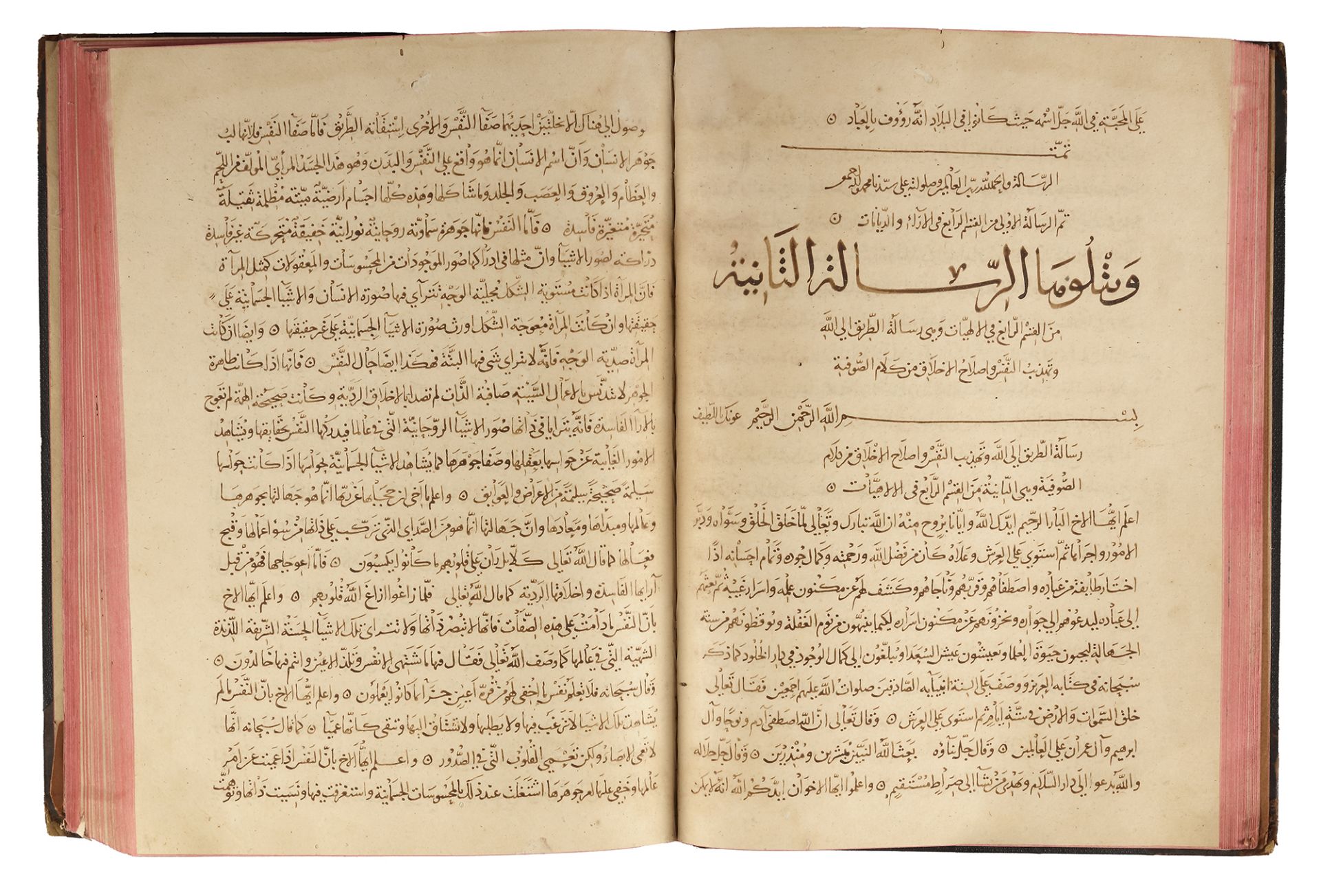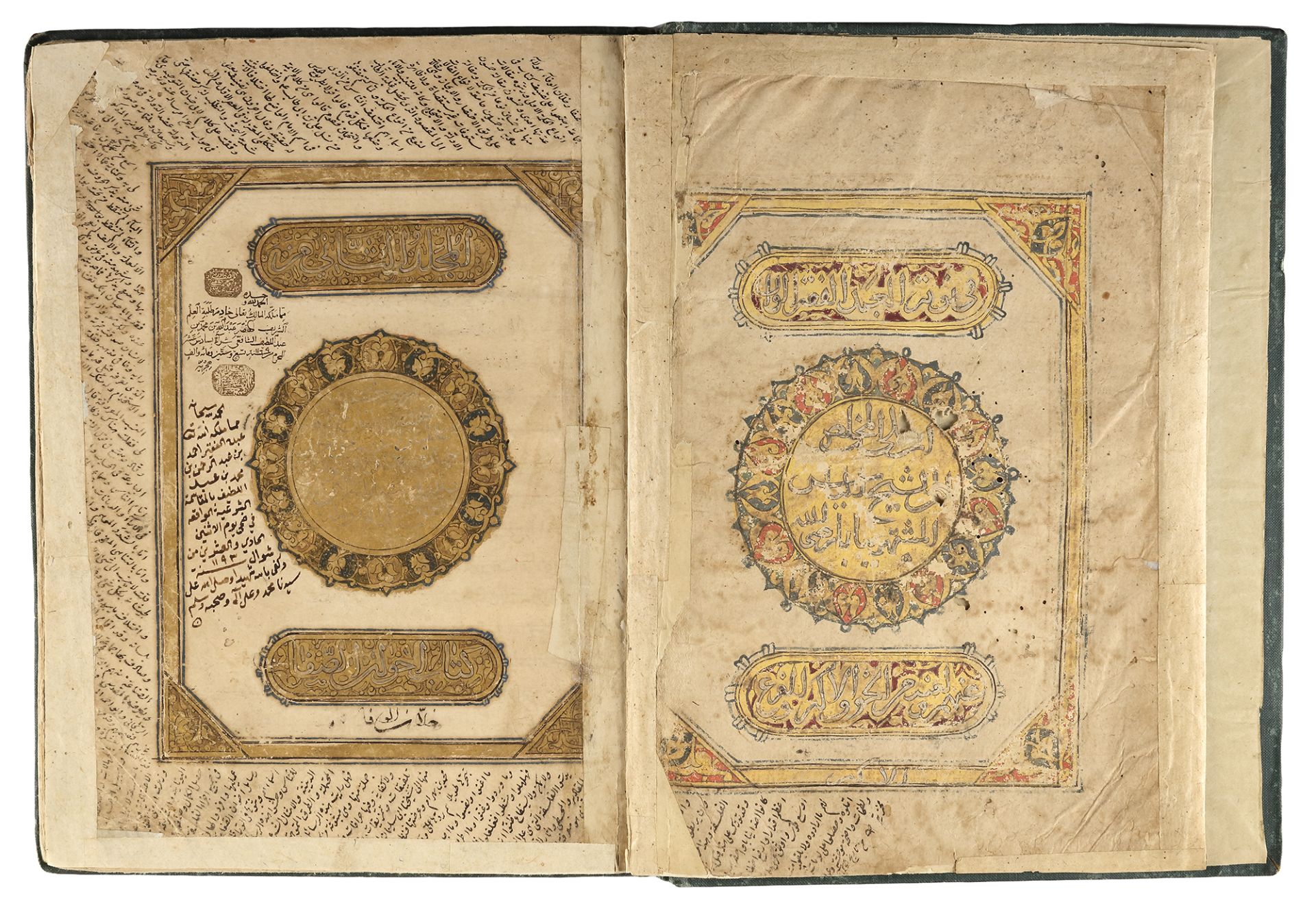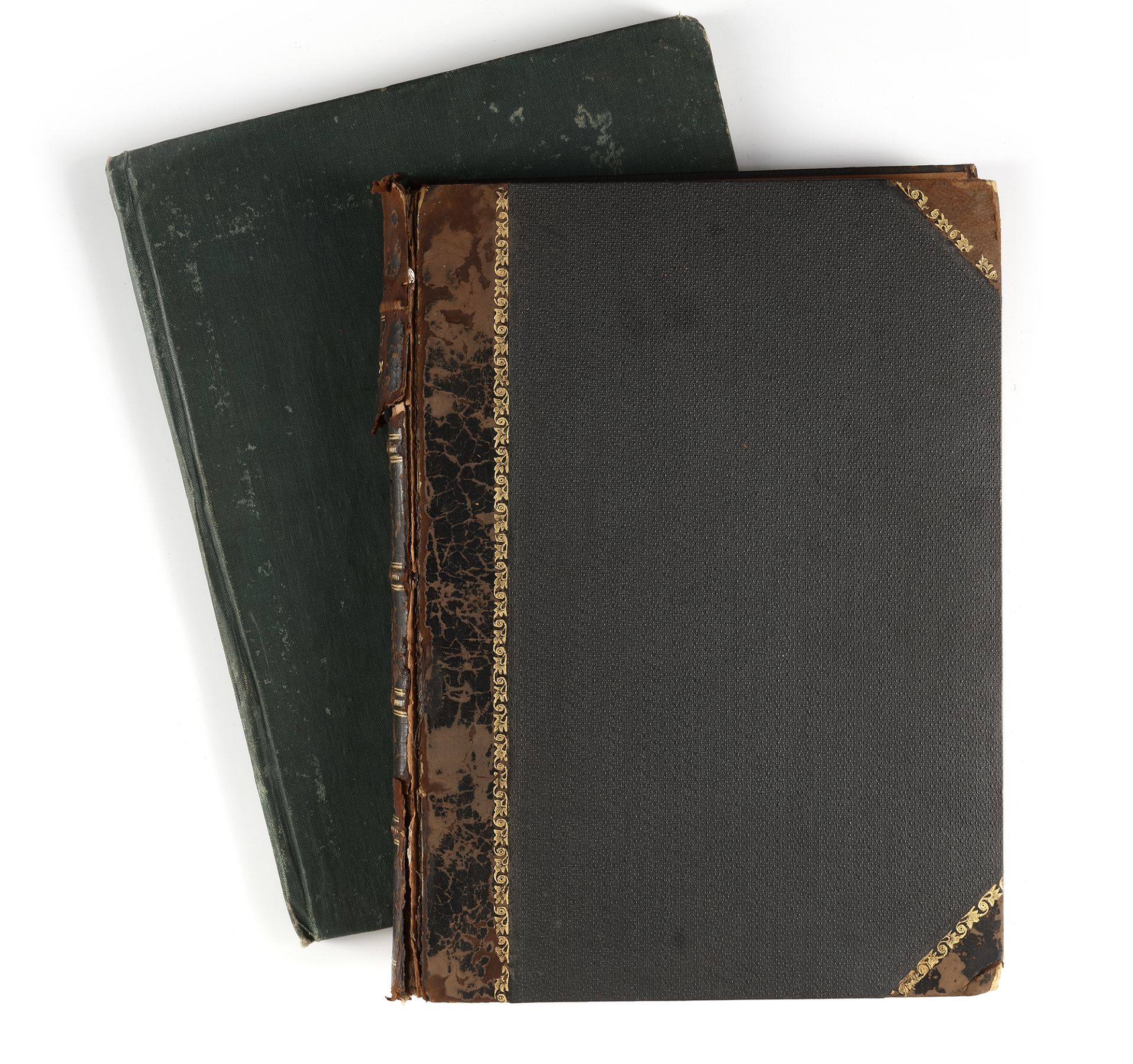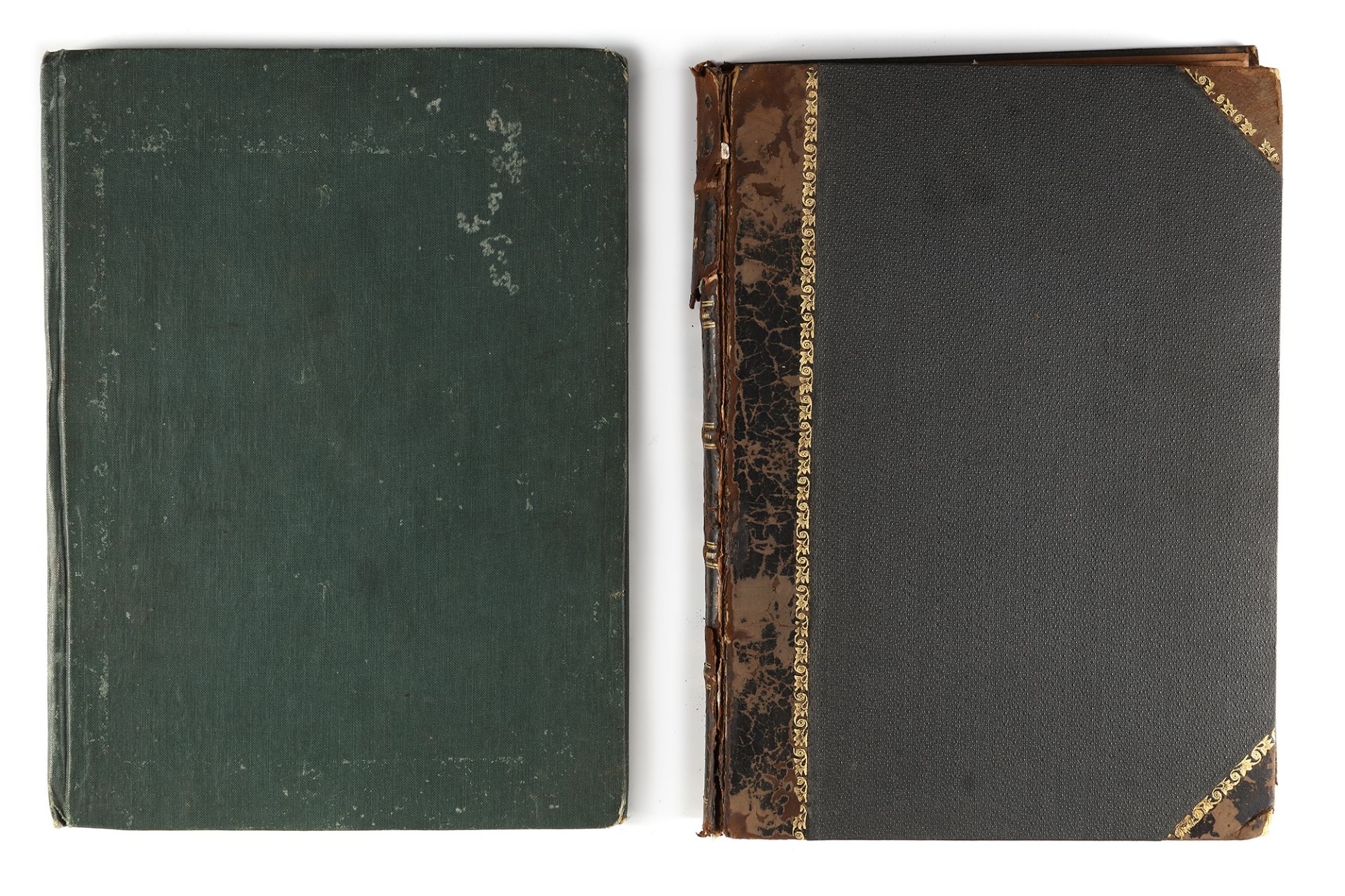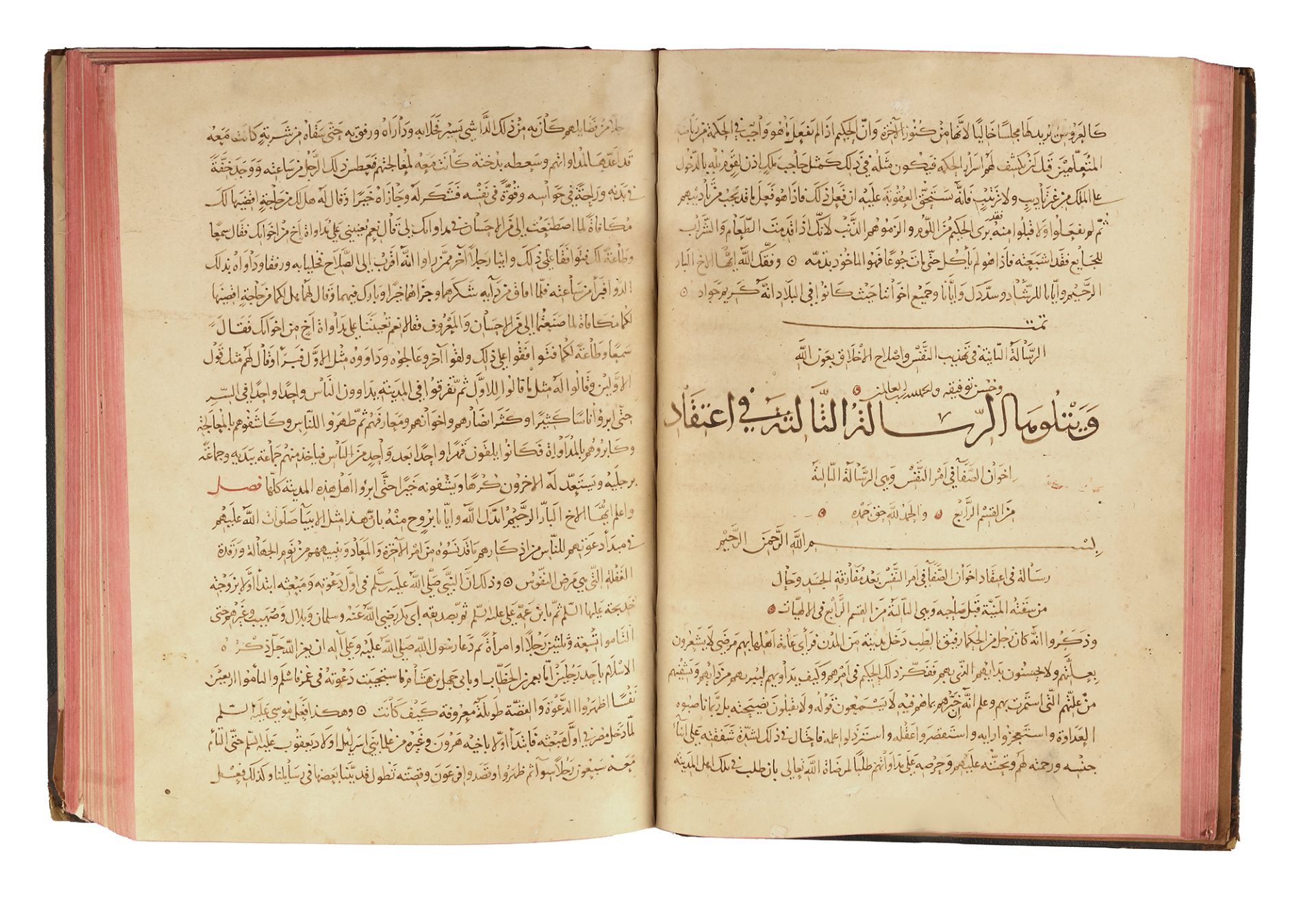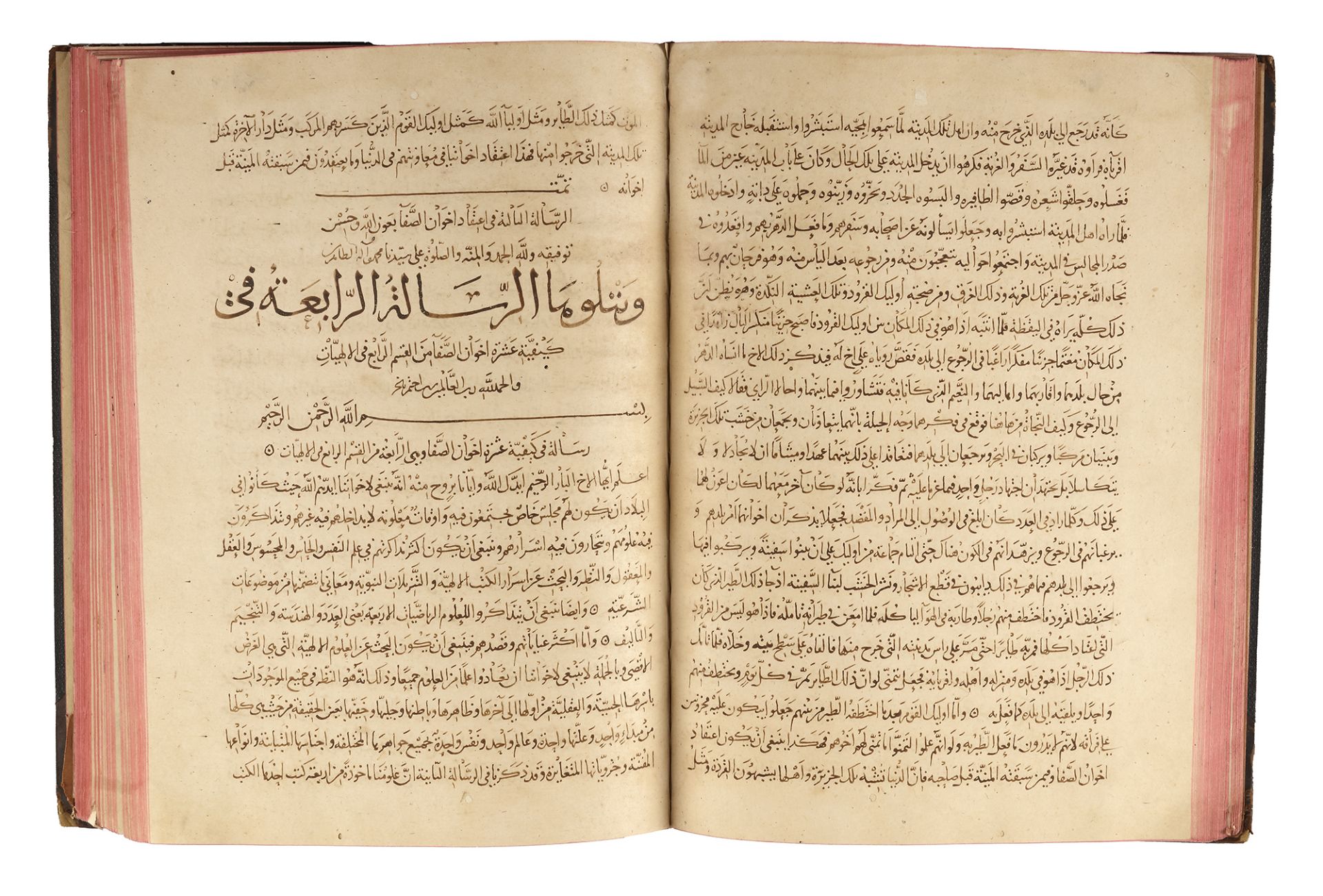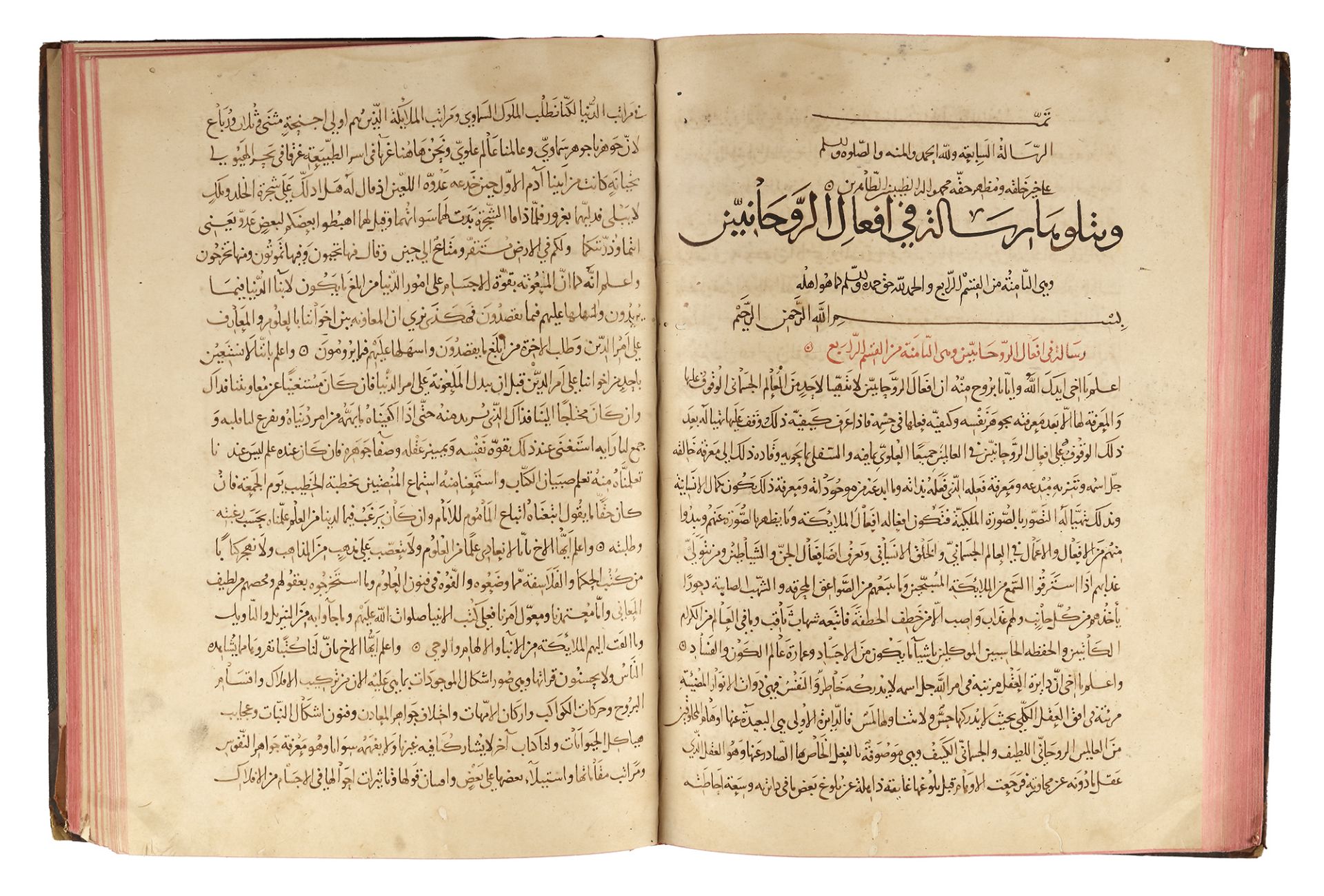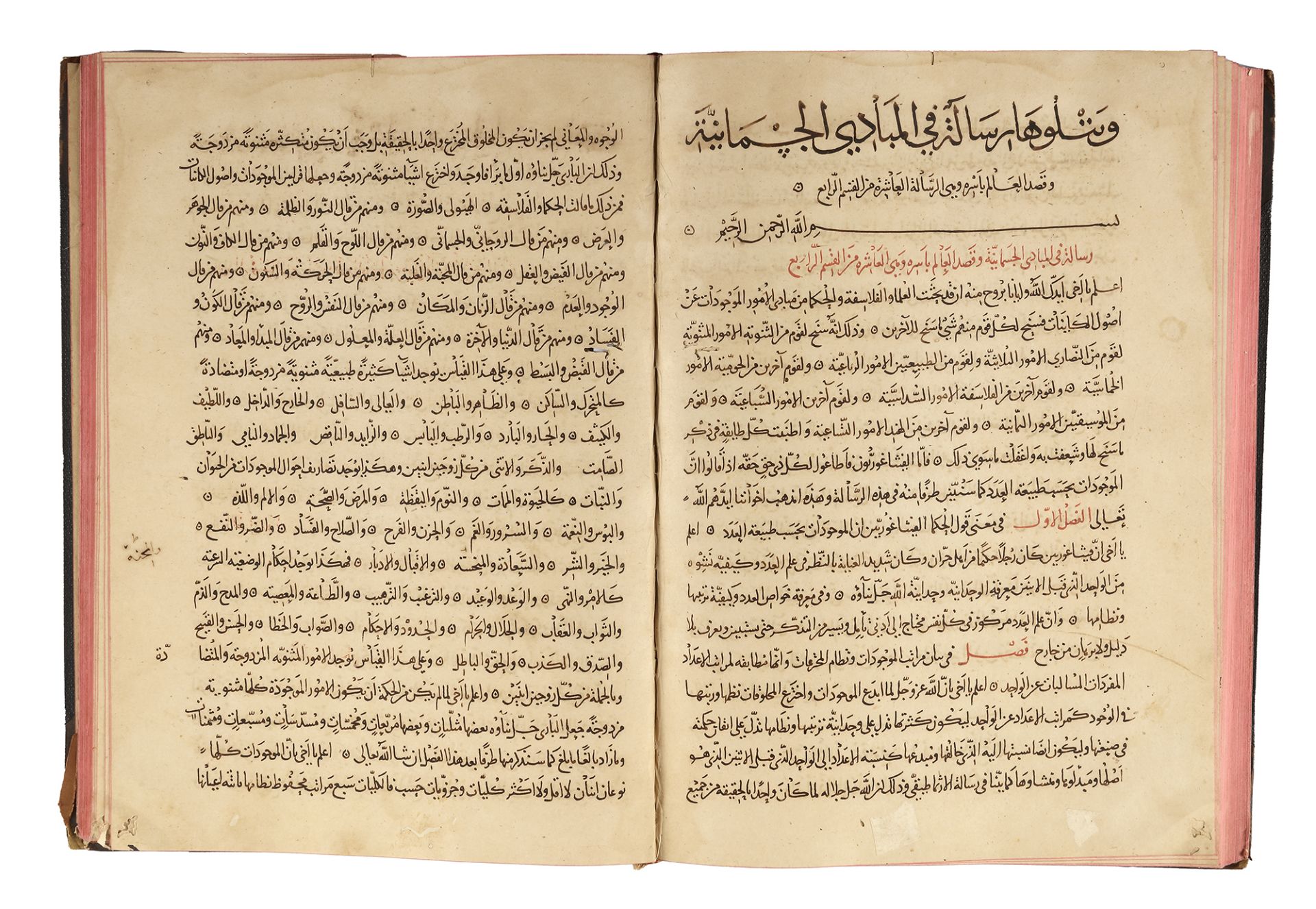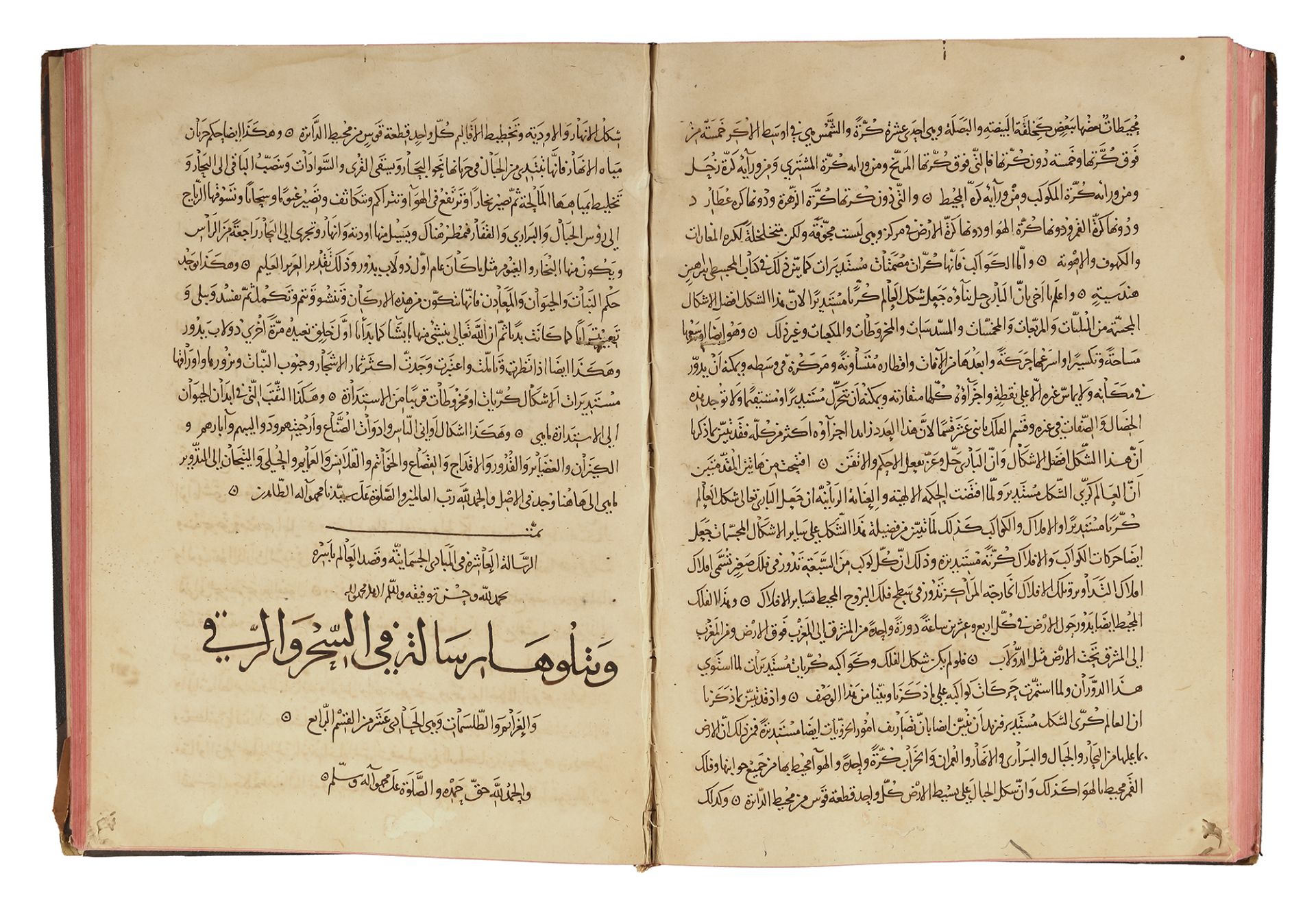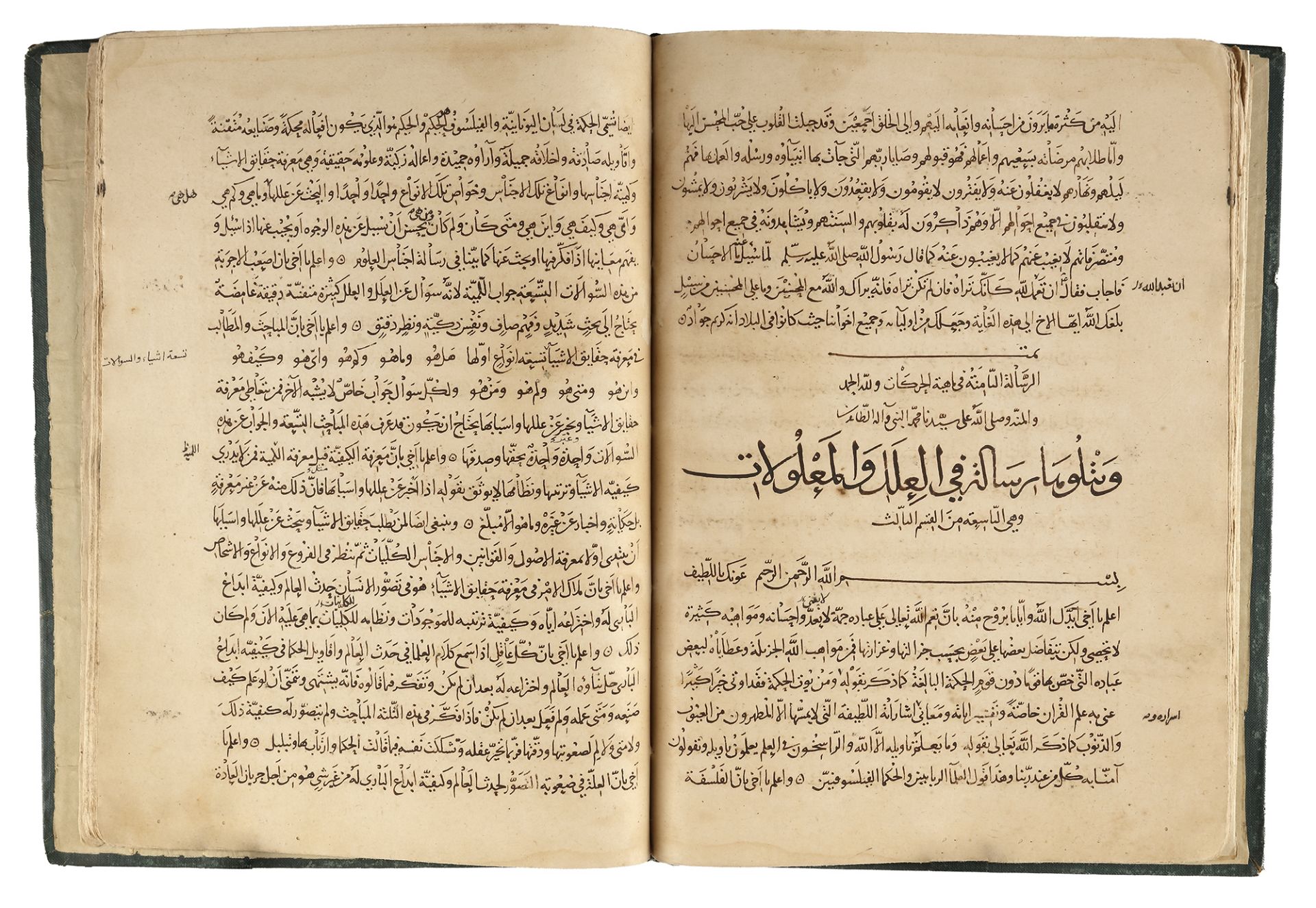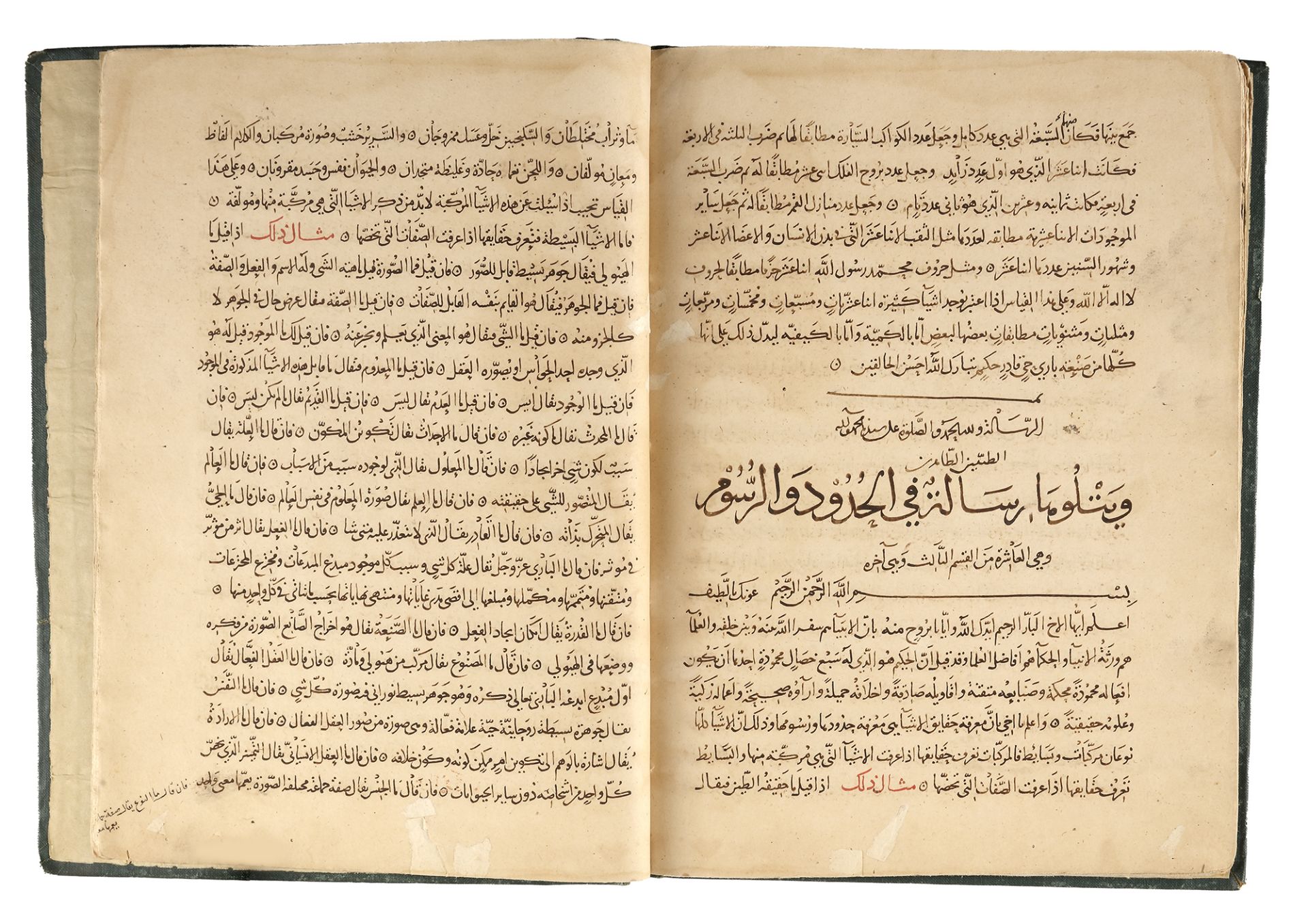37
RASA'IL IKHWAN AL-SAFA, SIGNED BY MUHAMMAD IBN 'UMAR IBN MUHAMMAD AL-KHAZAN AL TASRI, DATED 683 AH/1
FINE ISLAMIC ART HAMMER AUCTION 14 DECEMBER 2022
Auktionsdatum
Ort der Versteigerung
Generelle Versandinformationen vom Auktionshaus verfügbar
We do offer an affordable inhouse packing and shipping service.
Wichtige Informationen
Including 30 art works of the famous artist Mouneer Al Shaarani
AGB
ORIENTAL ART AUCTIONS B.V. - CONDITIONS OF SALE
Conditions of business Oriental Art Auctions
Applicable when buying movable property at auction
1 APPLICABILITY
1.1 The present Conditions of Sale are applicable to all parts of the relationship between the Oriental Art Auctions and the Buyer, which include a particular sale, purchase, intermediary services, appraisals, evaluations, estimates, cataloguing, and custody. The term 'Buyer' includes the 'Intending Buyer' who participates in the auction.
1.2 Any departure from the present Conditions of Sale is only possible if and insofar as expressly agreed in writing by Oriental Art Auctions.
1.3 Visitors to the auction shall be made aware of the applicability of these Conditions of Sale by means of publication available at the sale room in advance of the auction sale and/or by means of communication made prior to the sale. By participating in the auction sale each person acknowledges the applicability of the present Conditions of Sale and their complete acceptance thereof.
2. DUTY TO INFORM / DUTY TO INSPECT
2.1 Catalogue descriptions and any written or oral information given by the Specialist are to the best of his/her knowledge.
2.2 Prior to the sale the Buyer should satisfy him/herself as to both the condition and the accuracy of the description of any item in the internet catalogue or on the lot list by personally examining said item thoroughly or by having said item inspected carefully and expertly in order to form his/her own opinion as to the degree of correspondence between the item and its description. The Buyer should, where reasonably necessary or desirable, seek the opinion of an independent expert, and should not rely on the illustrations in printed, online or digital transmitted form. In the event that a description makes reference to certain faults or imperfections, Buyers should note that it is an indication which is not intended to be exhaustive and that there may be other faults not expressly referred to from which no rights can be derived.
2.3 Oriental Art Auctions cannot be held liable for the accuracy of the description published or expressed by any other means with respect to materials such as, for instance, types of wood, fabrics, alloys, earthenware, porcelain, and diamonds, all the above with the exception of precious metals. The Specialist accepts liability in case of an erroneous description only insofar as set out in Clause 6 of the present Conditions of Sale.
3. BIDDING
3.1 Buyers may bid in person. It is also possible for a bidder to submit a telephone bid or a written bid. Other methods of bidding, for example, electronic or over the Internet or by means of oral instructions, are only available when said services are expressly offered by Oriental Art Auctions.
3.2 Commission bids should be clear and unambiguous and in the opinion of Oriental Art Auctions must be received well in advance of the start of any auction session. In the event that Oriental Art Auctions shall receive several commission bids on a Lot for identical amounts and at auction said commission bids are the highest bids for that Lot, in the above event, the Lot in question shall be knocked down by Oriental Art Auctions to the person whose commission bid (for the relevant amount) was received first.
3.3 Commission bids shall only be executed in the event that Oriental Art Auctions can reasonably be expected to do so and Oriental Art Auctions has discretion at all times to decide not to bring out a commission bid.
3.4 In the event that a Buyer wishes to bid by telephone, said telephone bid must be confirmed in writing no later than one day prior to auction.
3.5 Oriental Art Auctions shall exclude any and all liability whatsoever in the event that for whatever reason a telephone bid is unsuccessful, similarly in the event that for whatever reason a commission bid, electronic bid or bid over the Internet is unsuccessful.
4. FORMATION OF A PURCHASE AGREEMENT
4.1 The purchase is concluded by way of definitive allocation. Definitive allocation occurs upon acceptance by Oriental Art Auctions of the Buyer's bid as the final bid and the knocking down of the Lot to the Buyer.
4.2 All Lots are sold 'AS IS', in the condition they are in at the fall of the hammer.
5. BUYER'S OBLIGATIONS
5.1 The Buyer shall provide proof of identity upon Oriental Art Auctions' request.
5.2 Buyers are deemed to be bidding for their own account and are personally liable for their bids without being able to rely on a principal.
5.3 The rights and obligations by reason of the Purchase Agreement and the present Conditions of Sale accrue exclusively to the Buyer and cannot be transferred to a third party.
6. AUCTIONEER'S LIABILITY TO BUYER
6.1 Unless certain items in the catalogue or on the lot list are expressly excluded - without prejudice to Clauses 2 & 4.2 - the Specialist may be willing to set aside the sale of a Lot sold at auction and to refund an amount corresponding to the original Purchase Price and auction costs in the event that the Seller within a period of three weeks subsequent to the sale has established to the satisfaction of Oriental Art Auctions that the Lot sold at auction has such serious hidden faults or that the description given is shown to be so erroneous that, had the Buyer been aware of said faults or had there been an accurate description at the fall of the hammer, said Buyer would have decided not to proceed with the purchase or would have made the purchase only at a considerably lower price. The above is not applicable to faults that are in relation to the condition of the item (such as, for instance, normal wear and restoration).
6.2 Oriental Art Auctions may refuse to take back a Lot in the event that its description was retracted in advance of or during a sale and the public has been informed of the correct description by means of oral announcements or the posting of notices in the saleroom.
6.3 The Buyer also forfeits any willingness on the part of Oriental Art Auctions to set aside the sale upon failure to return the item sold at auction in the same condition that it was in at the fall of the hammer, the above at the discretion of Oriental Art Auctions.
7. THE RIGHTS OF THE SPECIALIST AND ORIENTAL ART AUCTIONS
7.1 Oriental Art Auctions reserve the following rights:
a. to refuse at its discretion any person as a bidder or Buyer;
b. to change at all times the numerical order of Lots on sale;
c. for items to be withdrawn or added;
d. to combine or divide Lots
e. to withhold or delay the sale of Lots;
f. to rectify erroneous bids and allocations, or to cancel a purchase so that the Buyer is unable to benefit from any such mistake by invoking the formation of a Purchase agreement;
g. to claim upon allocation immediate payment in whole or in part; in case of refusal or inability to pay, Oriental Art Auctions is authorized to cancel the Purchase agreement and subsequently resell the particular Lot and to reject at any future auction any bids made by the defaulting bidder;
h. to set aside the Purchase agreement and to resell the item in the event that the Buyer refuses upon request to supply Oriental Art Auctions with his/her full name and address by presenting valid proof of identity;
i. not to transfer items from the account of the original Buyer to that of a third party;
j. not to release items in the course of an auction;
k. to execute bids for and on behalf of a Buyer or a Seller;
l. to resell at auction any Lot that was subject to a dispute during or shortly after a sale, and to set aside any Purchase agreement pertaining thereto.
m. to request a deposit from registered bidders prior to the sale
8. PAYMENT/ TRANSFER OF TITLE
8.1 Payment by the Buyer to Oriental Art Auctions, of the Purchase Price in Euros plus auction costs, other charges and VAT, if due, all of which to be determined by Oriental Art Auctions, must occur prior to the release of the purchased items within 7 days after the Sale or within the time limit to be determined by Oriental Art Auctions, whereby no discount or set-off is permissible.
8.2 Invocation of the so-called margin scheme can only be made in the event that prior to the sale all the necessary conditions have been met, including inter alia the declaration of purchase for VAT purposes (inkoopverklaring); the above at the absolute sole discretion of Oriental Art Auctions.
8.3 Title to the property in a Lot shall not pass to the Buyer until full payment of the Purchase Price has been made and in case of overdue payment, not until payment of the Purchase Price including the costs/charges mentioned in Clause 9 has been made in full.
9. OVERDUE PAYMENT
9.1 In case of non-payment Oriental Art Auctions may charge the Buyer interest at a rate equal to that of the statutory interest plus 3%, to be calculated with effect from the date upon which the term for payment expired. All judicial and extrajudicial costs shall be borne by the defaulting Buyer, which costs shall be estimated either at 15% of the Purchase Price plus auction costs or at a minimum of € 250 (two hundred and fifty Euro), without prejudice to the right to recover any costs actually incurred.
9.2 In the event that the Buyer exceeds the term for payment as a consequence of which Buyer is in default by operation of law, Oriental Art Auctions is authorized to give written notice of the setting aside of the Purchase agreement.
10. COLLECTION
10.1 The Buyer is obliged to take delivery of and to remove the items purchased or to make arrangements for the above within the period indicated by Oriental Art Auctions. Except for the right of Oriental Art Auctions to indicate a shorter or longer term, items must be collected within five working days from the date of the last auction sale.
10.2 Failure on the part of the Buyer to take delivery of the property purchased and to collect or arrange collection thereof within the stipulated time period, means that the Buyer is by operation of law in default and the provisions set out in Clause 9 shall apply mutatis mutandi. Oriental Art Auctions is also entitled at the risk and expense of the Buyer to place the property purchased in storage, as a consequence of which all transport costs and any risk inherent therein is likewise for the account of the Buyer.
11. UNSOLD LOTS
11.1 In the event that a Lot remains unsold at auction, Oriental Art Auctions is authorized but not obliged to reoffer the Lot for sale during a period of ten days following the auction, unless otherwise agreed to by the Consignor.
11.2 Oriental Art Auctions shall hold any such post-auction sale ("after sale") only if the sale can be effected at a price equivalent at least to the amount of the net proceeds of sale to which the Seller would have been entitled if the Lot had been sold for the reserve set at auction, unless other arrangements have been agreed to by the Seller.
11.3 Any purchase by a Buyer within the meaning of the present Clause shall incorporate these Conditions of Sale as if sold in the auction and shall be equally binding.
12. LIABILITY OF ORIENTAL ART AUCTIONS
12.1 Oriental Art Auctions accept no liability for any damage to frames of paintings or other works of art nor to any parts thereof such as glass coverings, passe-partouts etc., except in case of damage caused wilfully or by gross negligence on the part of Oriental Art Auctions and/or its employees or representatives.
12.2 In no event shall Oriental Art Auctions be liable for any damage/ loss caused by interruption to business, consequential damage/ loss, damage/ loss of property and/or indirect damage/ loss.
12.3 Oriental Art Auctions cannot be held liable for any accident or any form of personal injury suffered on or in the vicinity of the premises or surrounding areas in use for consignment, storing or viewing, for holding auctions or in use for picking up the goods sold, except in case of damage caused wilfully or by gross negligence on the part of Oriental Art Auctions and/or its employees or representatives and/or except insofar as such accident/personal injury is covered by the insurance of Oriental Art Auctions.
12.4 Entering the premises or surrounding areas is entirely at your own risk.
13. PHOTOGRAPHS AND ILLUSTRATIONS
13.1 Oriental Art Auctions is authorized to make photographs, illustrations, or any other visual representations of all the items offered for sale and to use the above in any way whatsoever, prior to, during or following the auction sale, and shall observe any statutory regulations applicable. Oriental Art Auctions shall retain the copyright in all such visual representations for use at its discretion.
14. MISCELLANEOUS
14.1 Nullification, annulment or the nonbindingness of one the provisions set out in the present General Conditions of Sale shall not affect the validity of the remaining provisions. In the event that one or more provisions is null and void, annulled or nonbinding, Buyer and Specialist and /or Oriental Art Auctions shall agree one or more provisions to replace the above which are valid and which correspond as far as possible in content and purport to the provisions that are null and void, annulled or nonbinding.
14.2 The present Conditions of Sale are governed exclusively by the Laws of the Netherlands.
14.3 All disputes pertaining to, arising from or in connection with any Purchase agreement concluded between Oriental Art Auctions and the Buyer, the formation of a Purchase agreement, or the present Conditions of Sale, shall be submitted to the exclusive jurisdiction of the competent court in Zwolle, except for the right of Oriental Art Auctions to choose to have the dispute adjudicated by the court that has jurisdiction by law.


























